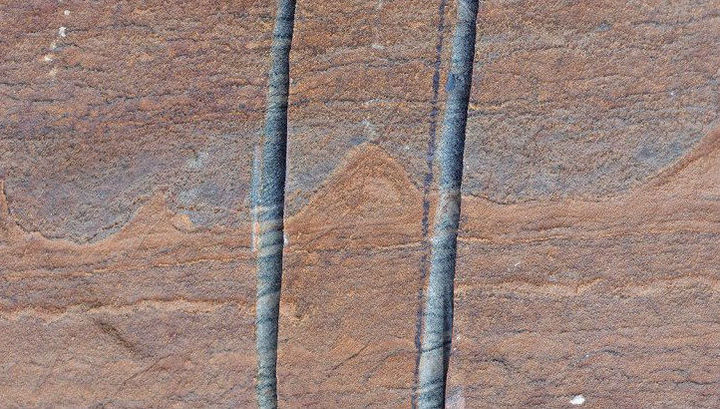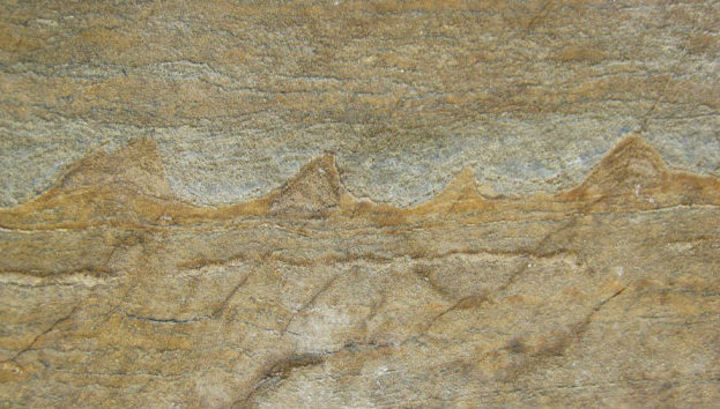Geologists say they have discovered one of the oldest evidence of life on Earth. The discovery, which still needs to be confirmed by other research groups, says that life could arise on a young planet rather quickly. In addition, the finding suggests that life on Mars could develop in the same way as on Earth. The red planet could no different from ours in those days. But first things first.
The research team, which includes Australian and British scientists reported the discovery of a layered structure, which is called a stromatolite. The discovery was made in Greenland rocks age of 3.7 billion years. Stromatolites -. This layered microbial education
According to experts, the study involved some of the most physically “tortured” rocks on Earth, and is thereby pressurized and heated for billions of years. Geological processes easily destroy fossils or leave them warped beyond recognition. Pressure and heat crystallized stones, erasing many small scale details that researchers commonly use to identify fossil stromatolites. For this reason, scientific work and its conclusions have caused heated debate
“I have 14 doubts and problems that need to be addressed before I believe it,” -. Says Roger Buick (Roger Buick), geologist the University of Washington in Seattle.
Sami stones come from the village Isua where researchers tried to find potential signs of life dating back billions of years. Previous works have studied the chemical composition of rocks suggests that they contain original tracks “biomarkers” of ancient organisms. However, different assumptions on this subject is still debated and contested.

The current melting of the ice cap of Greenland has revealed new clues. The research team led by Allen Natmena (Allen Nutman), a geologist from the Australian University of Wollongong, visited the outcrop of rock that had been buried under years of snow. Scientists are “cut off” a piece of the stone age of 3.7 billion years, and took him to Australia for studies.
The breed specialists have found alleged stromatolites along with other “evidence” pointing to the old life. “The combination of different types of evidence do our findings is quite convincing,” – said a member of the research team, Martin Van Kranendonk (Martin Van Kranendonk), a geologist from the University of New South Wales
Founded structure in stones -. Are tiny bumps, just only one to four centimeters in height. The very formation of the internal structure is very similar to the ancient (and modern) stromatolites, says Van Kranendonk.
The texture of the surrounding rock suggests that it is formed at the bottom of a shallow sea, like most stromatolites, found today in the Bahamas and in western Australia. In addition, the rocks contain carbonate minerals (dolomite, for example), which are also accompanied by stromatolites: colonies of ancient microbes, apparently, raised these minerals around them
But the researchers were surprised that the Greenland structure of approximately 220 million. years older than the oldest evidence of life that had previously been recognized by the scientific world. We are talking about the “complete” stromatolites from the Australian region of Pilbara
“The current evidence is much thinner than the stones in Australia”, -. Says astrobiologist Abigail Ollvud (Abigail Allwood) of the NASA Jet Propulsion Laboratory
.
Vnesёm spoonful of tar: some of the problems with the study of ancient stromatolites is that the layered structure may be formed as a result of processes that have nothing to do with the emergence and development of life. Thus, the minerals formed on the seabed, can also form layers, similar to stromatolites.

” Most of these structures should be classified as psevdostromatolity Unfortunately, I think that the data is not conclusive evidence, and do not support the strong statement “, -. says paleontologist Kathleen Gray (Kathleen Grey), who also works with the ancient stromatolites.
According to Tania Bosak (Tanja Bosak), Geobiology at the Massachusetts Institute of technology, she would like to see whether the alleged stromatolite small amounts of organic material in or near with him. Comparing different types of carbon compounds in the rock, it will be possible to identify whether this structure is biological or not.
But if you still assume that the rock formations are stromatolites, the microbes who created them were probably part of a larger community that has evolved on Earth, says Natmen. Although, of course, up to 100 per cent approval is still far away. We need new studies.
Why do scientists have considered the discovery important in terms of finding signs of life on Mars?
“Our understanding of the nature of life in the universe is determined by how long took the Earth to create conditions . for the life of Mars same can now be considered even more promising potential abode to live in the past “, – says Ollvud
Studies Red planet revealed that at about the same time, in what formed rocks in Isua,.” Mars is not very much and it was different from the Earth in terms of habitability prospects of standing water on the surface, “says Ollvud.
at the time, the era of late heavy bombardment by asteroids in the solar system just completed, before the scientists do not were convinced that Mars had enough time to “make” life until the water has evaporated.
But the earth at the same time subjected to the same bombardment of large asteroids. And if life could form and survive in these conditions, this means that her appearance was not so random and unique phenomenon, as we believe today. This, according to Ollvud, significantly increases our chances of finding traces of life on Mars and planets outside the solar system.
The study was published in the scientific journal Nature.
No comments:
Post a Comment